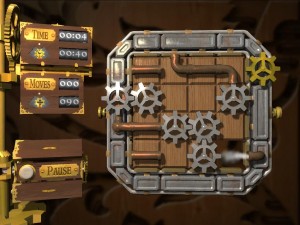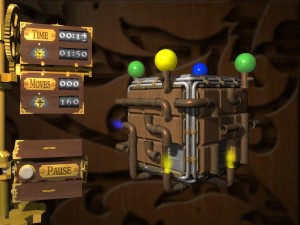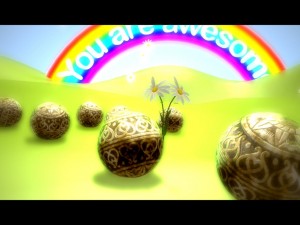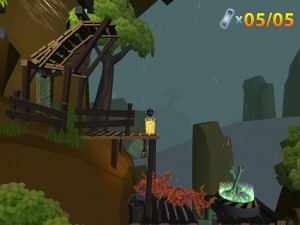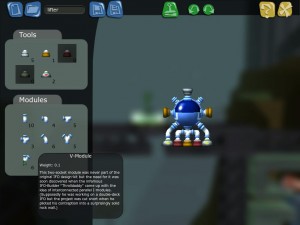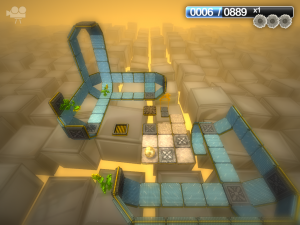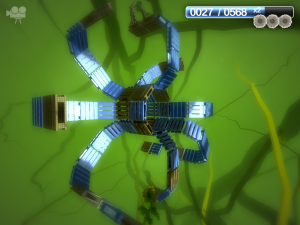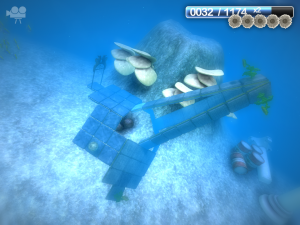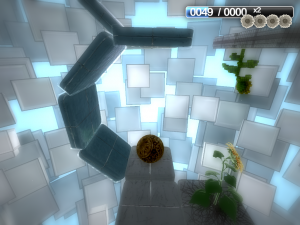Zen Bound 2
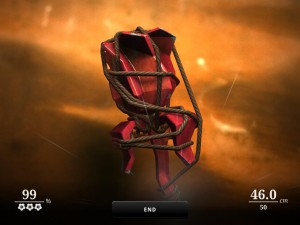 Zen Bound 2 is a sequel to a cell phone game, and a pretty convincing argument that cell phones are where the real innovation in gaming is these days. It’s a game about wrapping things in rope.
Zen Bound 2 is a sequel to a cell phone game, and a pretty convincing argument that cell phones are where the real innovation in gaming is these days. It’s a game about wrapping things in rope.
Each level gives you a small wooden sculpture with a taut rope tied to a nail in it. Purely by rotating the object, you reel the rope around it to bind as much as it can. Parts of the surface within a certain distance of contact with rope get coated in paint, which comes off if you unwind — clearly it’s not so much paint in the realistic sense as a means of visualizing your progress. Once you reach a minimum of 70% of the surface painted, you can tie the rope off at a second nail to end the level, or you can keep going for more paint and greater glory. Challenge is created by limiting the length of the rope, and through hard-to-reach concavities. Remember, you can’t just thread the rope through things; it’s always taut, and only goes into grooves if the groove is where its tension leads it. On a couple of occasions, I’ve had difficulty just reaching the final tie-off nail because of this. There are a couple of embellishments beyond this — paint bombs that cover a larger area, attached to either additional nails or to your rope — but this is a game of simple design, and getting much beyond the basics would be inelegant.
The “zen” part of the title, apart from supplying a rationale for Japanese garden imagery in the menus, seems to mostly just mean that there’s no time pressure, or indeed pressure of any kind. Getting to 100% coverage on every level would be a feat (and provides an Achievement), but just getting through the minimum seems like it just requires idle fiddling. I don’t think I’ve ever seen a game more deserving of being called “casual”. It’s a simulation of toying with knick-knacks.
The technology necessary for this game to exist, though, is pretty advanced. It needs a way to apply the paint texture to arbitrary portions of a surface. It needs a good physics model — usually in games that mostly means collisions, but here it means tension and friction, making the rope slide along surfaces in convincing ways. And it needs a really good UI for rotating 3D objects. Apparently the iOS version uses tilt and multitouch for this, but that’s not an option on PC. I’ve had to implement rotating things in 3D with a mouse before, and it’s surprisingly hard to get it feeling right — mainly because 3D rotations have three degrees of freedom, but your mouse has only two. Usually, as a player, I can get used to whatever scheme has been implemented, but in this game, absolute control is crucial. So it comes up with a compromise: dragging with the left mouse button pressed rotates things one way, dragging with the right button rotates things another way, and between the two schemes, everything is covered. I’ve played the game enough to internalize this, but I couldn’t tell you exactly how it works geometrically, except that the right button lets you rotate about the direction the camera is facing.
 Comments(1)
Comments(1)